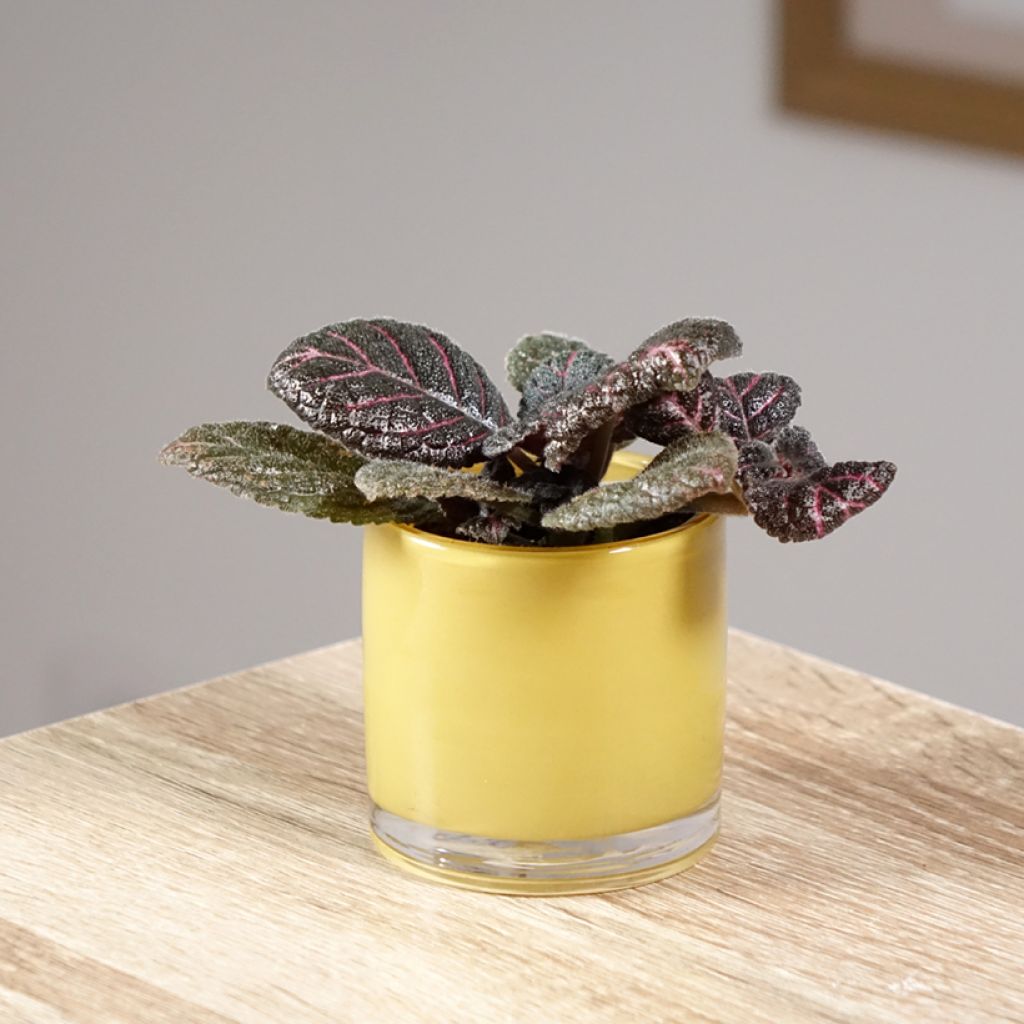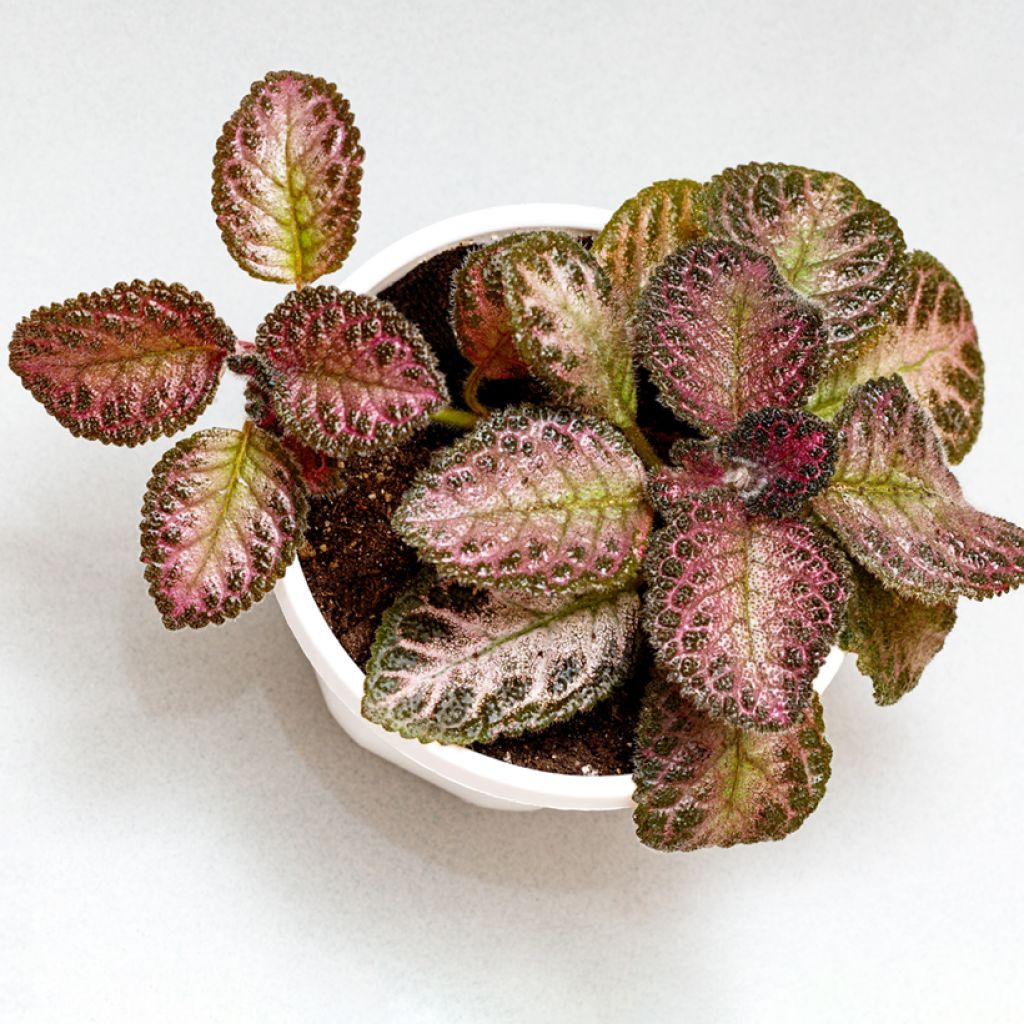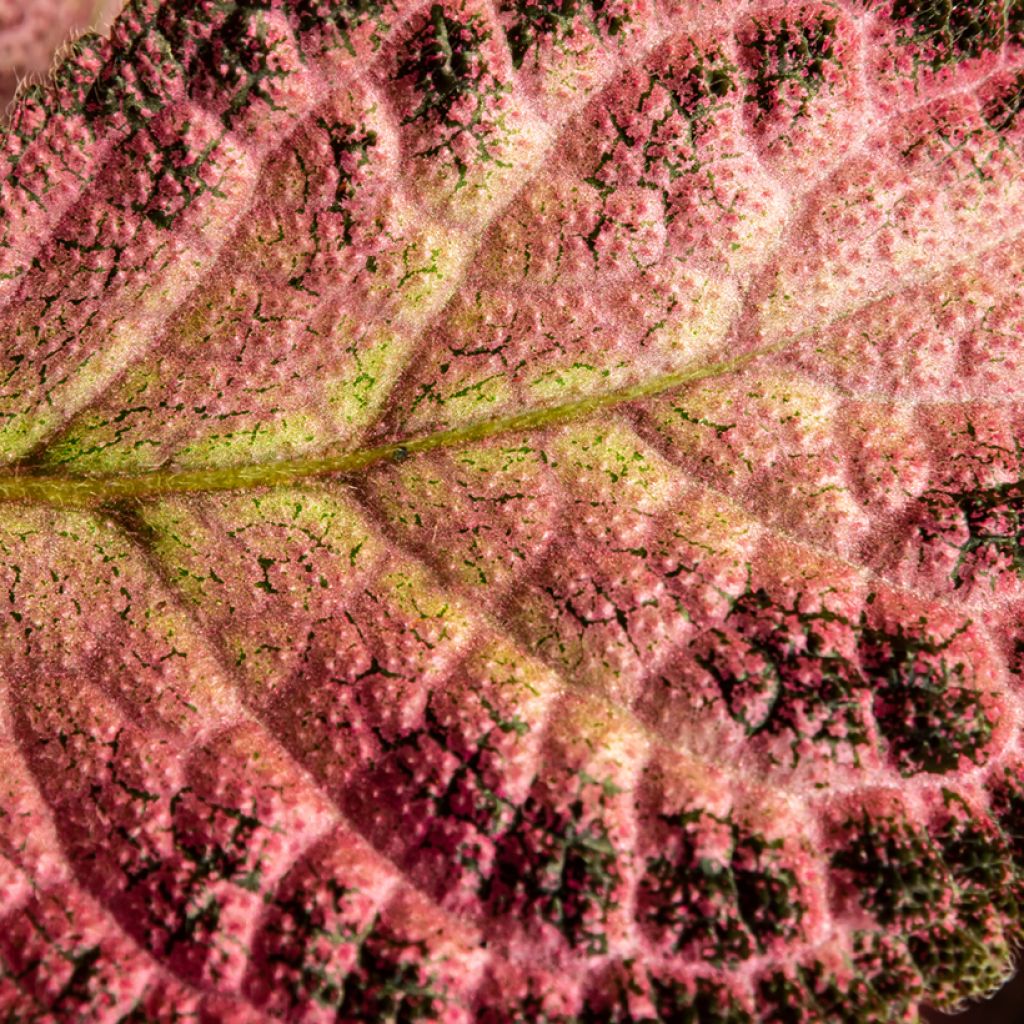

Episcia cupreata Pink Acajou - Flame violet


Episcia cupreata Pink Acajou - Flame violet


Episcia cupreata Pink Acajou - Flame violet
Episcia cupreata Pink Acajou - Flame violet
Episcia cupreata Pink Acajou
Flame violet
Special offer!
Receive a €20 voucher for any order over €90 (excluding delivery costs, credit notes, and plastic-free options)!
1- Add your favorite plants to your cart.
2- Once you have reached €90, confirm your order (you can even choose the delivery date!).
3- As soon as your order is shipped, you will receive an email containing your voucher code, valid for 3 months (90 days).
Your voucher is unique and can only be used once, for any order with a minimum value of €20, excluding delivery costs.
Can be combined with other current offers, non-divisible and non-refundable.
This plant carries a 30 days recovery warranty
More information
We guarantee the quality of our plants for a full growing cycle, and will replace at our expense any plant that fails to recover under normal climatic and planting conditions.
Description
The Episcia 'Pink Acajou' is a tropical plant nicknamed 'Flame Violet' that never goes unnoticed. Its velvety foliage displays fascinating shades of bronze green, silver, and soft pink. Each leaf seems to play with the light, creating an almost surreal spectacle. Add to this its small, bright orange-red flowers, and this variety becomes the perfect decorative asset for creating a warm and refined interior. With its trailing habit, it will be ideal in a hanging basket or on a shelf.
The Episcia 'Pink Acajou' is a stoloniferous perennial belonging to the Gesneriaceae family. It originates from the Episcia cupreata species also known by the botanical synonym Achimenes cupreata. This 'Pink Acajou' variety exhibits rapid growth and a creeping habit, forming a dense carpet of foliage. At maturity, it typically reaches a height of 15 to 20 cm with a similar spread. The elliptical leaves measure between 4 and 10 cm in length. They feature a velvety and quilted texture with highly decorative metallic hues. Flowering, which can occur from spring to autumn, is characterised by small tubular orange-red flowers with a yellow throat, measuring about 2 cm long. The Episcia genus includes tropical perennial plants native to the humid forests of Central and South America, particularly Colombia, Venezuela, and Brazil. These plants are closely related to African violets (Saintpaulia) and are prized for their ornamental foliage and colourful blooms. In their natural habitat, they thrive in shady, humid environments, often in undergrowth.
When grown indoors, the Episcia 'Pink Acajou' prefers bright but filtered light, avoiding direct sunlight which could scorch its delicate leaves. High ambient humidity is beneficial, with an ideal temperature between 20 and 24°C. The growing medium should be light, humus-bearing, and well-draining, kept consistently slightly moist but without excess water to prevent root rot.
The Episcia 'Pink Acajou' will easily find its place in a bright room such as a living room, bedroom, or even a well-lit bathroom. With its creeping habit, it makes a striking display in a hanging basket, on a wall shelf, or in an open terrarium where its velvety, colourful leaves can be admired at eye level. Pair it with plants featuring plain green foliage to highlight its metallic tones and create a chic tropical atmosphere. Consider, for example, a Pilea peperomioides also known as Chinese Money Plant. Its rounded, bright green foliage will contrast with the Episcia's colourful hues while remaining understated enough not to steal the spotlight.
Report an error about the product description
Foliage
Plant habit
Flowering
Botanical data
Episcia
cupreata
Pink Acajou
Gesneriaceae
Flame violet
Cultivar or hybrid
Location
Location
Maintenance and care
Watering tips
Potting advice, substrates and fertilisers
Houseplant care
Disease and pest advice
Maintenance and care
This item has not been reviewed yet - be the first to leave a review about it.
Haven't found what you were looking for?
Hardiness is the lowest winter temperature a plant can endure without suffering serious damage or even dying. However, hardiness is affected by location (a sheltered area, such as a patio), protection (winter cover) and soil type (hardiness is improved by well-drained soil).

Photo Sharing Terms & Conditions
In order to encourage gardeners to interact and share their experiences, Promesse de fleurs offers various media enabling content to be uploaded onto its Site - in particular via the ‘Photo sharing’ module.
The User agrees to refrain from:
- Posting any content that is illegal, prejudicial, insulting, racist, inciteful to hatred, revisionist, contrary to public decency, that infringes on privacy or on the privacy rights of third parties, in particular the publicity rights of persons and goods, intellectual property rights, or the right to privacy.
- Submitting content on behalf of a third party;
- Impersonate the identity of a third party and/or publish any personal information about a third party;
In general, the User undertakes to refrain from any unethical behaviour.
All Content (in particular text, comments, files, images, photos, videos, creative works, etc.), which may be subject to property or intellectual property rights, image or other private rights, shall remain the property of the User, subject to the limited rights granted by the terms of the licence granted by Promesse de fleurs as stated below. Users are at liberty to publish or not to publish such Content on the Site, notably via the ‘Photo Sharing’ facility, and accept that this Content shall be made public and freely accessible, notably on the Internet.
Users further acknowledge, undertake to have ,and guarantee that they hold all necessary rights and permissions to publish such material on the Site, in particular with regard to the legislation in force pertaining to any privacy, property, intellectual property, image, or contractual rights, or rights of any other nature. By publishing such Content on the Site, Users acknowledge accepting full liability as publishers of the Content within the meaning of the law, and grant Promesse de fleurs, free of charge, an inclusive, worldwide licence for the said Content for the entire duration of its publication, including all reproduction, representation, up/downloading, displaying, performing, transmission, and storage rights.
Users also grant permission for their name to be linked to the Content and accept that this link may not always be made available.
By engaging in posting material, Users consent to their Content becoming automatically accessible on the Internet, in particular on other sites and/or blogs and/or web pages of the Promesse de fleurs site, including in particular social pages and the Promesse de fleurs catalogue.
Users may secure the removal of entrusted content free of charge by issuing a simple request via our contact form.
The flowering period indicated on our website applies to countries and regions located in USDA zone 8 (France, the United Kingdom, Ireland, the Netherlands, etc.)
It will vary according to where you live:
- In zones 9 to 10 (Italy, Spain, Greece, etc.), flowering will occur about 2 to 4 weeks earlier.
- In zones 6 to 7 (Germany, Poland, Slovenia, and lower mountainous regions), flowering will be delayed by 2 to 3 weeks.
- In zone 5 (Central Europe, Scandinavia), blooming will be delayed by 3 to 5 weeks.
In temperate climates, pruning of spring-flowering shrubs (forsythia, spireas, etc.) should be done just after flowering.
Pruning of summer-flowering shrubs (Indian Lilac, Perovskia, etc.) can be done in winter or spring.
In cold regions as well as with frost-sensitive plants, avoid pruning too early when severe frosts may still occur.
The planting period indicated on our website applies to countries and regions located in USDA zone 8 (France, United Kingdom, Ireland, Netherlands).
It will vary according to where you live:
- In Mediterranean zones (Marseille, Madrid, Milan, etc.), autumn and winter are the best planting periods.
- In continental zones (Strasbourg, Munich, Vienna, etc.), delay planting by 2 to 3 weeks in spring and bring it forward by 2 to 4 weeks in autumn.
- In mountainous regions (the Alps, Pyrenees, Carpathians, etc.), it is best to plant in late spring (May-June) or late summer (August-September).
The harvesting period indicated on our website applies to countries and regions in USDA zone 8 (France, England, Ireland, the Netherlands).
In colder areas (Scandinavia, Poland, Austria...) fruit and vegetable harvests are likely to be delayed by 3-4 weeks.
In warmer areas (Italy, Spain, Greece, etc.), harvesting will probably take place earlier, depending on weather conditions.
The sowing periods indicated on our website apply to countries and regions within USDA Zone 8 (France, UK, Ireland, Netherlands).
In colder areas (Scandinavia, Poland, Austria...), delay any outdoor sowing by 3-4 weeks, or sow under glass.
In warmer climes (Italy, Spain, Greece, etc.), bring outdoor sowing forward by a few weeks.





























